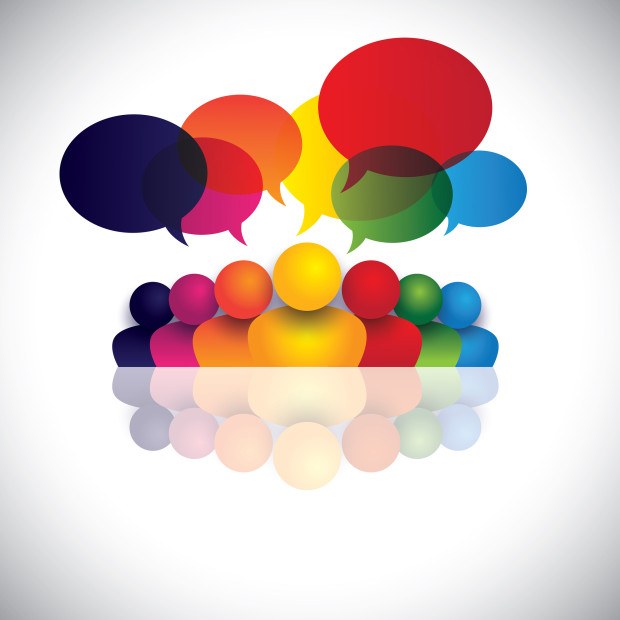In days past, insurance customers had no other option but to call or visit an insurance agent to enroll, manage their account or make a claim. That was the nature of the age-old industry.
Executive Summary
Selling the right product to the right customer at the right time was one of the goals of a partnership between Esurance and Nuance Communications. Here, Nuance VP George Skaff explains the basics of improving the chat experience for potential customers of the online insurance brand.(Editor’s Note: Esurance approved the content of this article.)
But now, more insurance brands are paying attention to where today’s customers are. Consumers are “always on” their smartphones, online when offline. As they research and make purchases on the go, they expect easy access to self-service and live assistance. According to Forrester Research, 73 percent of U.S. online adults say “valuing their time is the most important thing a company can do to provide them with good online customer service.” Forrester also found that 53 percent of consumers will abandon an online purchase if they cannot find quick answers to their questions. (Source: Kate Leggett’s Forrester Blog: “Your Customers Don’t Want to Call You for Support,” March 3, 2016)
Providing self-service options is critical, but even the most independent customers may eventually need some human interaction, including when it comes to insurance matters. Past research has shown that although 46 percent of customers prefer self-service, half contact an agent to clarify information or help them make the right choice. (Source: “Playing for keeps: How insurers can win customers, one at a time,” PwC FS Viewpoint, July 2014, www.pwc.com/fsi)
So, should insurance brands then send these tech-savvy independent thinkers to a traditional channel for assistance? Today’s consumer wants instant gratification, and waiting on hold on the phone is not going to suffice. The necessary human contact can be provided efficiently in the form of live chat. In a blog post earlier this year, Forrester’s VP and principal analyst, Kate Leggett, noted that online chat adoption among customers has risen from 38 percent in 2009 to 65 percent in 2015—a sign that customers are discovering how quickly they can be connected to agents with the right skills to answer their questions. (Source: Kate Leggett’s Forrester Blog: “Online Self-Service Dominates Yet Again. Why? It’s an Effortless Way to Get to Your Answers,” Jan. 28, 2016)
Esurance is a strong example of balancing a traditional and tech-savvy approach to live assistance in customer service. Since Esurance is by design an online insurance brand, they use live chat as a means of communication with site visitors and customers. In a modern world, with modern customers, Esurance understands that people prefer to receive help differently—whether that’s calling a knowledgeable expert or getting immediate assistance online through live chat.
To modernize its online customer engagement, Esurance partnered with Nuance Communications (TouchCommerce at the time) to create a professional, friendly and efficient chat experience that creates trust in the Esurance brand and maximizes sales of the highest quality to the business while maintaining a relevant and transparent experience for the customer.
The primary goals of the partnership were developed to propel online sales growth and customer satisfaction:
- Quality Sales. Selling the right product to the right customer at the right time.
- Customer Experience. Setting the tone, making the experience incredible and seamless from the get-go.
- KPI Improvement. Metric optimization through continuous program and chat agent initiatives.
- Web Intelligence.Use of chat intelligence and analytics to optimize overall customer engagement experience, accelerate customers moving to self-service and reduce chat volumes over time.
The plan to achieve these goals was derived from the well-established concept of delivering the right message to the right customer at the right time. Even today’s customers benefit from traditional ways (although dressed in modern technology). Here are a few of the strategies used:
1. Targeting and business rules were prioritized for maximum efficiency. Esurance has a high volume of visitors and a lean team of agents. In order to better scale and prioritize the impact of chat, Esurance and Nuance refined business rules and targeting for maximum efficiency.
For example, in the current chat experience, the chat button is more often displayed in areas of the website where high-value targets showing purchase intent would be much more likely to see it, such as the lower funnel and error pages. Conversely, a page in the marketing section would not display a chat option unless a surplus of agents exists. Readjusting the queue according to business rule performance and optimized agent ratios has led to significant decreases in queue abandonment rates.
Targeting site visitors in the lower funnel or error pages means that engagement tools, analytics and behavioral information are used to move highly motivated customers past their remaining objections so they will complete their purchases.
2. Targeted proactive chat now accounts for more than half of chat-assisted sales.Previously, Esurance only offered reactive chat (ability for visitors seeking assistance to click to chat). In the new program with Nuance, visitors who are having trouble or seem likely to abandon their purchase receive a proactive chat from Esurance with an offer to help. The proactive chat invitations are not sent to all visitors; rather, they are highly strategic, governed by business rules and prioritization per advanced targeting technology from Nuance.
3. Using a co-browse tool provided a near 50 percent increase in conversions compared to the site average.The use of a co-browse tool has had a major, positive impact on conversions due to increased efficiency and visibility in chat. It allowed Esurance agents to more effectively address issues that customers were experiencing on the site and to show customers how to effectively self-serve in future visits.
Since optimizing its customer engagement program to cater to the self-service trends we see today, Esurance has been experiencing a significant increase in conversion rate and customer satisfaction. According to recent surveys, most of the company’s customers said that the online chat experience has saved them a call or email.
As Nuance manages the optimization of the Esurance site, positive results grow every month—policy sales and chat interaction rates continue to rise. Why such outstanding results? The brand that sells insurance for the modern world used a tried-and-true marketing technique to lay a sturdy foundation: giving the right content—to the right people—at the right time.





















 Florida Gets 8 New P/C Carriers After Insurance Market Reforms
Florida Gets 8 New P/C Carriers After Insurance Market Reforms  Uncertainty Keeps Prices Up; No Prior-Year Loss Development: Travelers
Uncertainty Keeps Prices Up; No Prior-Year Loss Development: Travelers  If U.S. Inflation Reflected Rising Home Insurance Costs, It’d Be Even Higher
If U.S. Inflation Reflected Rising Home Insurance Costs, It’d Be Even Higher  What Industry Executives Are Saying About Loss Reserves, Social Inflation
What Industry Executives Are Saying About Loss Reserves, Social Inflation 






